
Clouds in the sky above the Secret Garden at New England Botanic Garden at Tower Hill.
Hannah Brier
Youth Education Intern
We see clouds floating in the sky above us nearly every day. Sometimes clouds are white and puffy or sometimes they are dark and can block out the sun, covering the entire sky. Seeing these different kinds of clouds can mean different kinds of weather are coming. Meteorologists – scientists who study weather – are cloud experts. They study the way clouds form and their different shapes and sizes so we can better understand the types of weather they bring. Tune in and read on to learn more about clouds and get some tips for your next cloud watching adventure.
What is a cloud?
A cloud is a collection of tiny droplets of water or ice crystals that are so small and light that they float in the air. Clouds come in all shapes and sizes. Some float high up in the sky and some are so low to the ground that we walk right through them. This type of a cloud is called fog.
How do clouds form?
Did you know that water is in the air around us all the time? The water that is in the air and near the ground is usually in the form of an invisible gas called water vapor. When warm air rises and cools down in the atmosphere, the water vapor condenses and changes from a gas to a liquid, turning into tiny droplets of water. Can you guess how many of these water droplets are needed to form a cloud? Billions! When all of these water droplets come together, they form the different types of clouds we see floating above us in the sky.
Are there different kinds of clouds?
Yes! Meteorologists classify or group clouds into ten different categories based on how high or low they form in the sky. Cloud types are split into four different categories – high clouds, middle clouds, low clouds, and vertical clouds.
High Altitude Clouds (Cirrus Clouds)
High clouds are known as cirrus clouds and are found at altitudes of over 20,000 feet – that’s even higher than most birds fly! There are three different kinds of high-altitude clouds. The first kind are cirrus clouds which are thin and wispy. You’ll see them when the weather is nice out. Second are cirrocumulus clouds that look almost like cotton balls all stuck together. In the winter these clouds usually mean it will be a nice, but cold day. In tropical areas seeing these clouds might mean a hurricane is on its way. The last type of high-altitude clouds are cirrostratus clouds. These clouds are flat, high flying clouds that might block out the sun, covering the entire sky. These clouds signal it may rain the next day.
Mid Altitude Clouds (Alto Clouds)
Middle clouds, or alto clouds, form between 6,500 and 20,000 feet. There are two main types of alto clouds. Altostratus clouds are usually light grey in color and create a thin covering across the sky. Sometimes you can see the sun through them as a dim and barely visible disk. These clouds often tell meteorologists that rain is on the way. Altocumulus clouds are small, puffy, and grey and form in groups. If you see these clouds on a warm, humid morning, it may mean that thunderstorms are coming later in the afternoon.
Low Altitude Clouds (Stratus Clouds)
Low clouds, or stratus clouds form at altitudes below 6,500 feet. There are three kinds of stratus clouds. A stratus cloud covers the entire sky in a sheet of dark grey. Light rain or drizzle often fall from these clouds. Stratocumulus clouds – small puffy grey clouds – look similar to altocumulus clouds. They are low flying and usually form in rows, leaving ribbons of blue sky between them. Nimbostratus clouds are usually observed when it is raining or snowing. They are low, dark grey, and puffier than stratus clouds.
Vertical Clouds (Cumulus Clouds)
Meteorologists also classify clouds as vertical clouds. Vertical, or cumulus clouds are often very tall and can count as both a low and a medium-altitude cloud, or a medium and high-altitude cloud. There are two main types of cumulus clouds. Cumulus clouds are usually low to middle level clouds. These white, puffy clouds have lots of different shapes. They usually look like big pieces of cotton candy and are the best for cloud watching! Cumulonimbus clouds are very tall clouds, ranging from low, all the way to high altitudes. They are storm clouds and can bring thunderstorms, heavy rain, or even tornados.
Want to learn more about clouds? Tune in as Youth Education Staff, Marissa Gallant and Hannah Brier answer some more of your cloud questions and learn how to make your own cloud in a jar.
Join Youth Education Intern, Hannah Brier, as she heads outside to practice identifying and watching clouds in her neighborhood. Learn some tips and tricks for embarking on your own cloud gazing adventure and don’t forget to bring your cloud binoculars.
Ready to try your own cloud inspired crafts? Create some binoculars to accompany you on your cloud watch!
You will need:
- Two cardboard tubes
- Hole punch
- String, twine, or yarn
- Blue paint
- Paint brush
- Cotton balls
- Glue, stapler, or paperclips
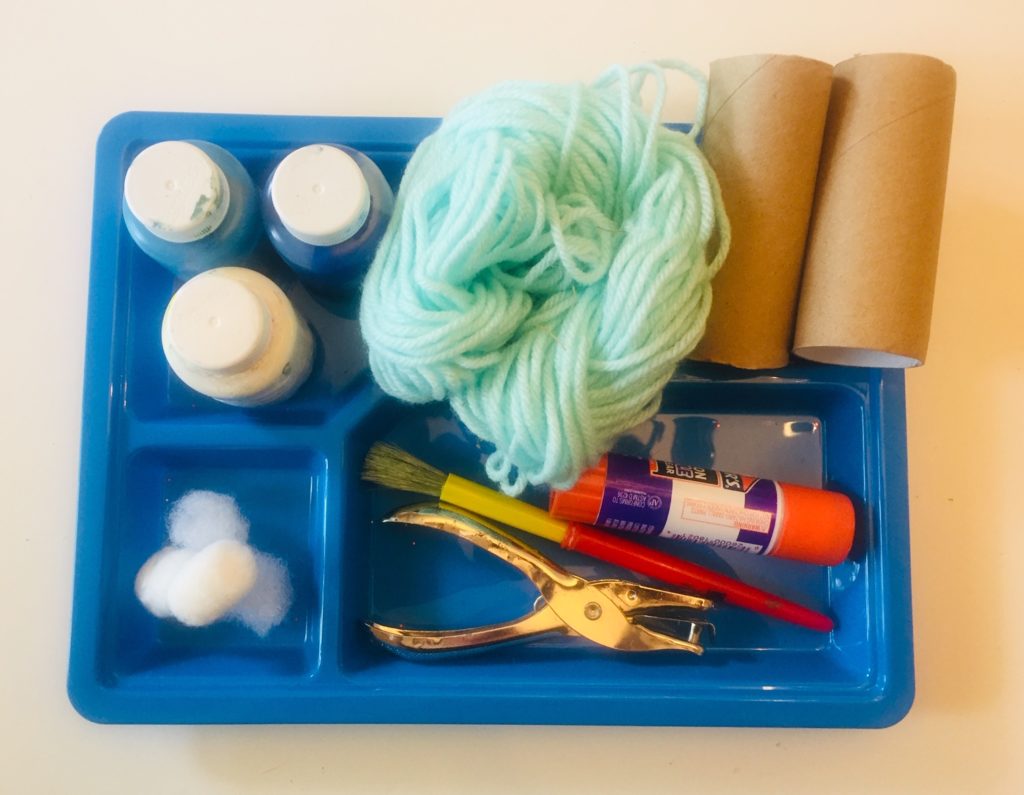
Once you have gathered your supplies, glue, staple, tape, or paperclip your cardboard tubes together side-by-side. Mix up some sky blue paint by adding a bit of dark blue paint to some white paint. Next, paint both tubes and set aside to dry.
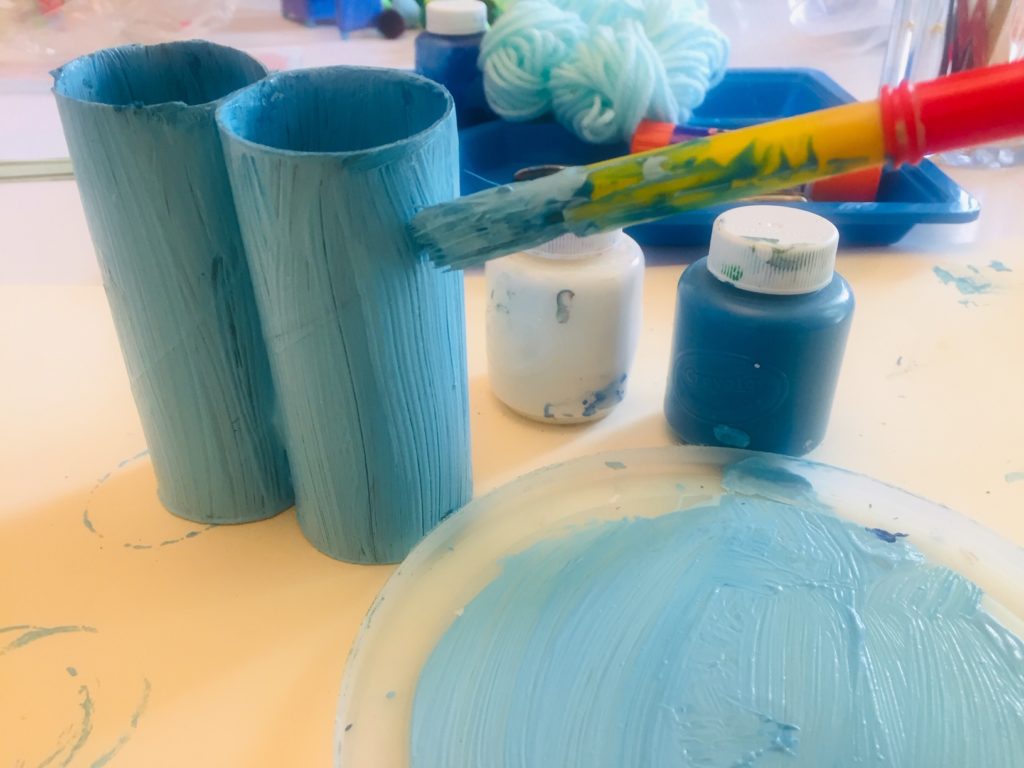
Once dry, use a hole punch to make two holes – one on either side of the top of your tubes. Tie a piece of yarn through each hole, making sure the string is long enough to fit around your head like a necklace. Next, gently pull apart your cotton balls to make different cloud shapes and glue them to the sides of the tubes. What sort of clouds will you create?
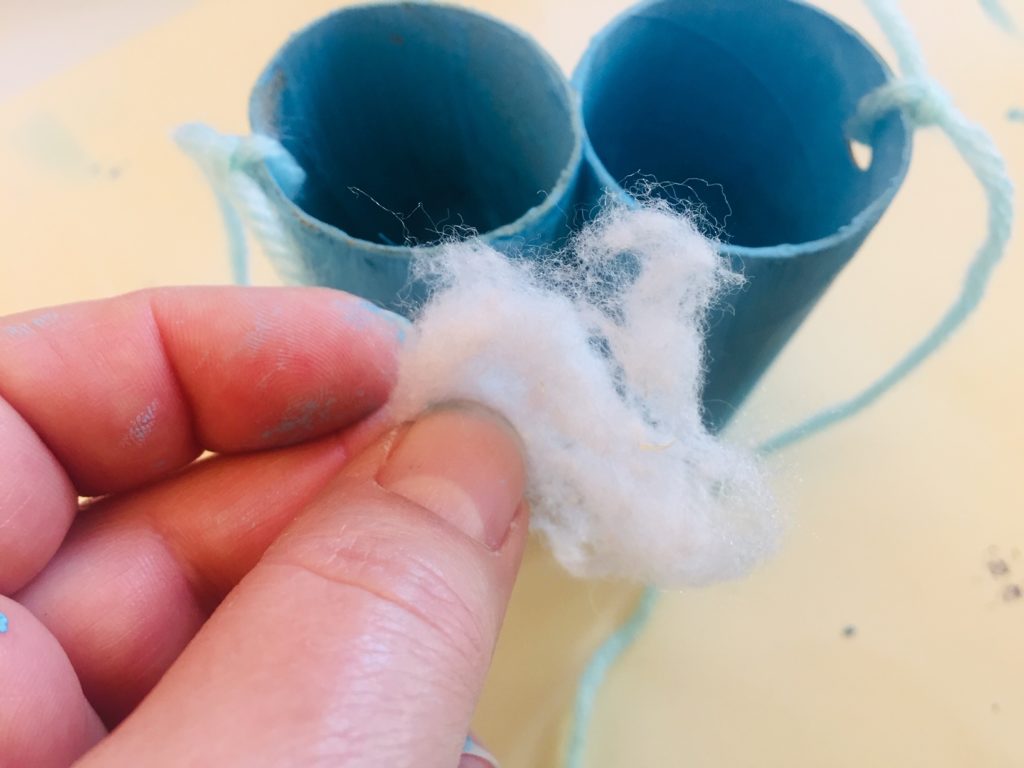
Now you have your cloud watching binoculars which means it’s time to go outside and start cloud watching! What shapes will you see?
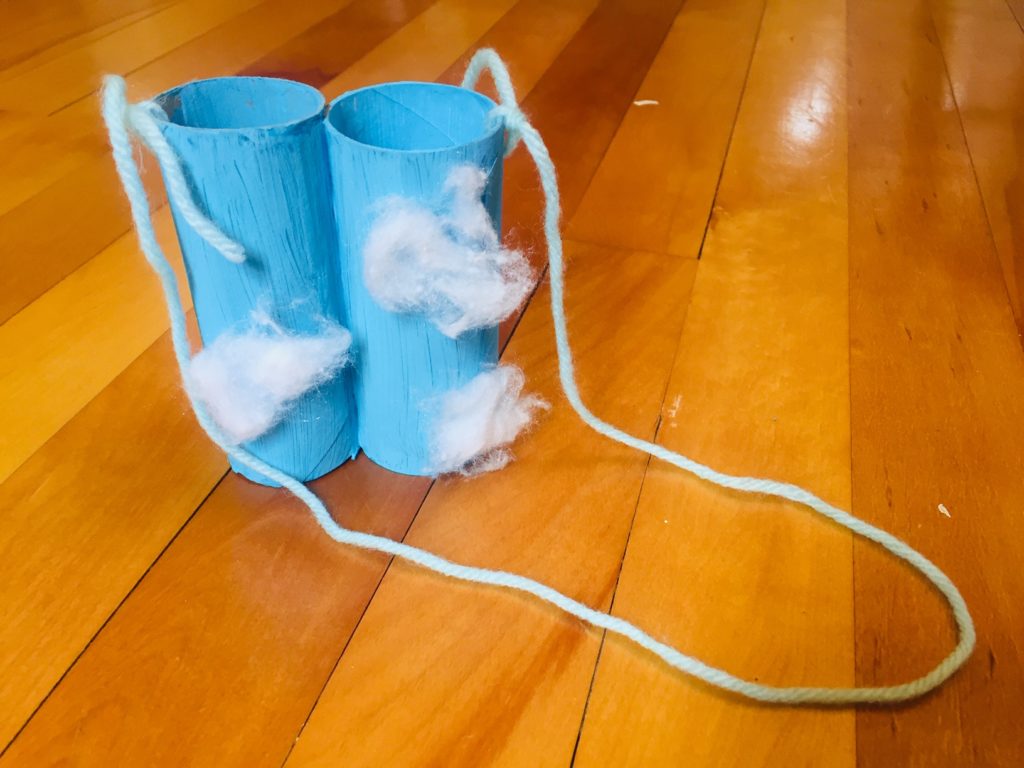
Want to try more cloud-tastic activities? Try making your own cloud dough using a few simple household items.
You will need:
- 4 cups flour
- 1/2 cup vegetable or baby oil
- Mixing bowl
Pour your flour into a large tub followed by the oil. Mix your ingredients together and use your imagination to create your own earth-bound cloud shapes. Don’t have flour or baby oil? You can also try creating cloud dough by mixing 2 cups of cornstarch with 1 cup of conditioner. Try both recipes and see which creates the best clouds!
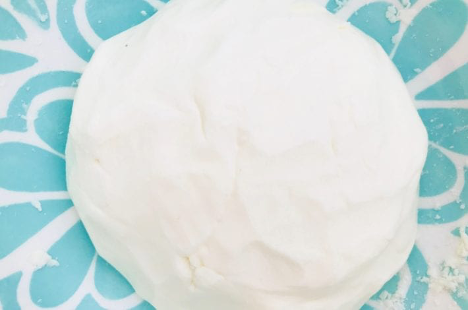
Happy cloud crafting!
